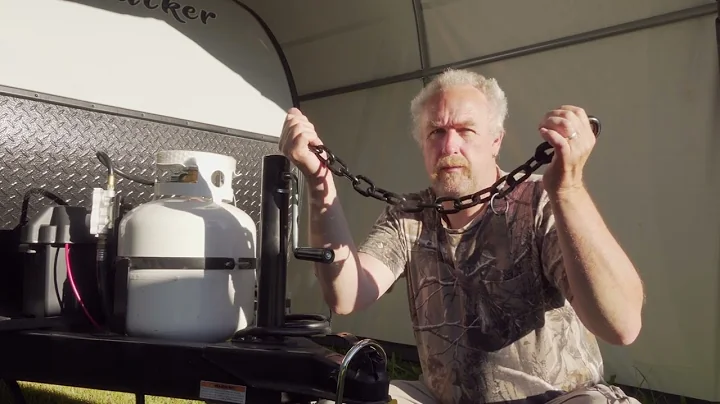The Consequences of Using Too Much Engine Choke Revealed!
Table of Contents
- Introduction
- Components of the Engine
- Fuel Tank
- Fuel Filter
- Fuel Line
- Carburetor
- Engine
- Starting the Engine
- Choke On
- Induction Stroke
- Vacuum Build-Up
- Fuel Ratio Adjustment
- Combustion Process
- Running with the Choke On
- Excess Fuel Consumption
- Incomplete Combustion
- Smell of Fuel from Exhaust
- Lumpy Running and Excessive Smoke
- Consequences of Prolonged Use
- Turning Off the Choke
- Opening the Choke Butterfly
- Normal Engine Running
- Efficiency and Fuel Consumption
- Conclusion
🔍 What Happens Inside the Engine When Using Too Much Choke?
In this article, we will explore what happens inside an engine when we use too much choke. We will examine the components of the engine, the starting process, and the consequences of running with the choke on. So, let's dive in and understand the working of the engine's choke system.
🚀 Introduction
The engine choke plays a crucial role in starting a cold engine by adjusting the air-fuel mixture. When we use too much choke, it affects the fuel ratio and can lead to inefficient combustion. In this article, we will uncover the details of what happens inside the engine when the choke is utilized excessively.
🛠️ Components of the Engine
Before diving into the workings of the choke system, let's familiarize ourselves with the essential components of the engine:
1. Fuel Tank
The fuel tank is where the gasoline or fuel used by the engine is stored. It provides a constant supply of fuel to the engine.
2. Fuel Filter
The fuel filter ensures that any impurities or debris present in the fuel do not reach the engine. It prevents damage to the engine's internal components.
3. Fuel Line
The fuel line connects the fuel tank to the carburetor, allowing the fuel to be transported from the tank to the engine.
4. Carburetor
The carburetor is responsible for mixing the fuel with the air to create the combustible mixture used by the engine.
5. Engine
The engine is the heart of the system, where combustion takes place, generating the power required for the engine to function.
🔌 Starting the Engine
To understand what happens when we use too much choke, we need to comprehend the starting process of the engine.
1. Choke On
When starting a cold engine, we need to engage the choke. The choke butterfly is closed, restricting the airflow into the carburetor.
2. Induction Stroke
As the piston lowers on the induction stroke, it draws in air from the air filter and into the carburetor. However, due to the closed choke butterfly, only a small amount of air can pass through a tiny hole.
3. Vacuum Build-Up
The restricted airflow creates a vacuum within the carburetor. This vacuum is essential as it pulls up fuel from beneath, up to the top of the main jet.
4. Fuel Ratio Adjustment
The high vacuum created by the choke results in a higher ratio of fuel to air entering the engine. This fuel-rich mixture is necessary to start the engine efficiently when it is still cold.
5. Combustion Process
As the piston continues its motion, it compresses the fuel and air mixture on the compression stroke, leading to combustion. This process repeats on subsequent cycles, allowing the engine to run with the choke on until it reaches the required temperature.
⛽ Running with the Choke On
Running the engine with the choke on for an extended period can have negative effects. Let's take a closer look at what happens when we use too much choke:
1. Excess Fuel Consumption
Using too much choke results in an increased amount of fuel being drawn into the engine. This excess fuel consumption is necessary during the initial startup but becomes inefficient when the engine begins to warm up.
2. Incomplete Combustion
The excess fuel accumulation can cause incomplete combustion. Some fuel may not combust, leading to the presence of unburnt fuel in the cylinder. This incomplete combustion can have adverse effects on the engine's performance.
3. Smell of Fuel from Exhaust
When the choke is used excessively, the exhaust fumes may have the distinct smell of fuel. This is a result of unburnt fuel being present in the exhaust gases expelled by the engine.
4. Lumpy Running and Excessive Smoke
Running the engine with too much choke can lead to lumpy running and excessive smoke emission. The engine may not run smoothly, and the excessive fuel can cause the exhaust smoke to become more prominent.
5. Consequences of Prolonged Use
Continuing to run the engine with the choke on for an extended period can result in increased fuel deposits on the piston and cylinder walls. This can lead to decreased engine efficiency, reduced power output, and potential damage to engine components.
🛠️ Turning Off the Choke
Once the engine reaches the necessary operating temperature, it is crucial to turn off the choke to allow the engine to run normally. Let's understand the process:
1. Opening the Choke Butterfly
To turn off the choke, we need to open the choke butterfly, allowing unrestricted airflow into the carburetor. This adjustment is necessary for the engine to operate efficiently.
2. Normal Engine Running
With the choke off, the engine runs with the optimal air-to-fuel ratio. It operates smoothly, providing the desired power output while minimizing fuel consumption.
3. Efficiency and Fuel Consumption
Running the engine without the choke ensures efficient combustion and optimal fuel consumption. The engine utilizes fuel effectively, resulting in better performance and reduced emissions.
🎯 Conclusion
In conclusion, using too much choke can have adverse effects on the engine's performance. While the choke is essential for starting a cold engine, prolonged use can lead to excessive fuel consumption, incomplete combustion, and other issues. It is crucial to understand the choke's purpose and use it judiciously to maintain the engine's health and efficiency.
✨ Highlights:
- Use of choke during engine startup.
- Vacuum build-up and fuel ratio adjustment.
- Consequences of running with excessive choke.
- Turning off the choke for normal engine running.
FAQ:
Q: Can I use the choke in warm weather?
A: The choke is primarily used for cold starts. In warm weather, it is unnecessary and may lead to fuel-related issues. It is best to avoid using the choke when the engine is already warm.
Q: How long should I keep the choke on?
A: The duration of keeping the choke on varies based on the engine's design and temperature conditions. As a general guideline, once the engine starts running smoothly, the choke can be gradually turned off.
Q: Is running the engine with the choke on harmful?
A: Running the engine with the choke on for an extended period is not recommended. It can lead to inefficient combustion, increased fuel consumption, and potential damage to engine components.
Q: How can I improve my engine's cold start performance?
A: Ensuring the choke is functioning correctly and delivering the right fuel-to-air mixture is crucial. Additionally, regular engine maintenance, including spark plug inspection and fuel system cleaning, can improve cold start performance.







